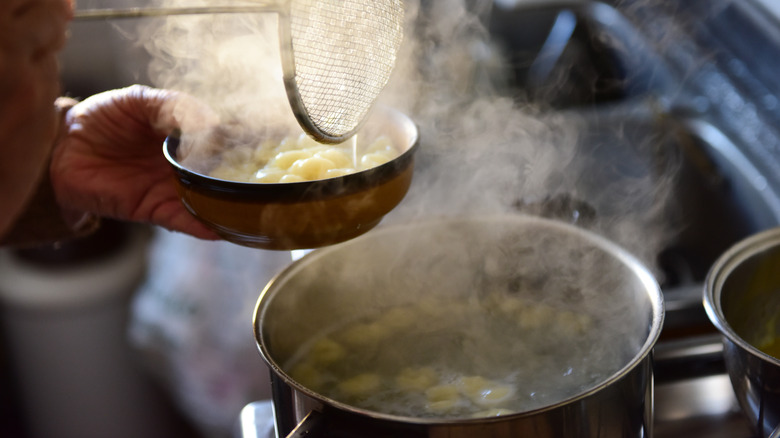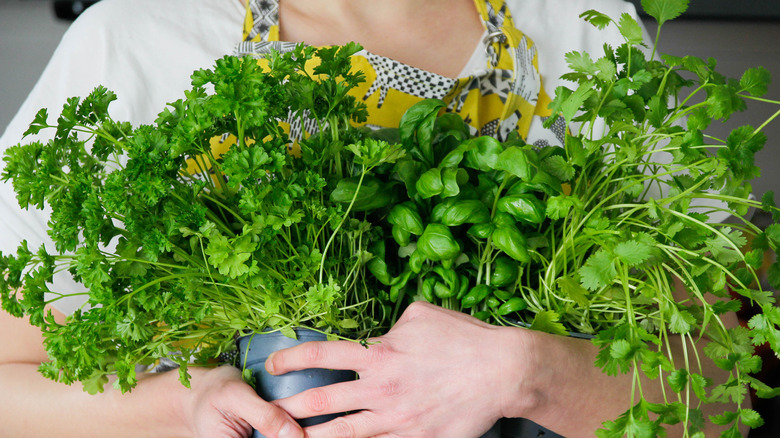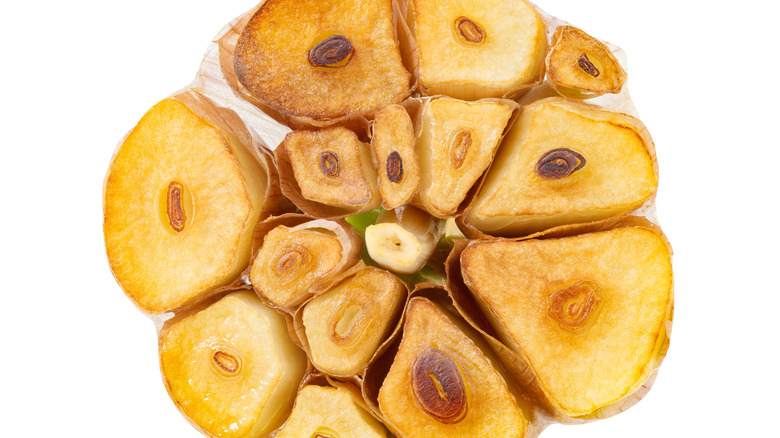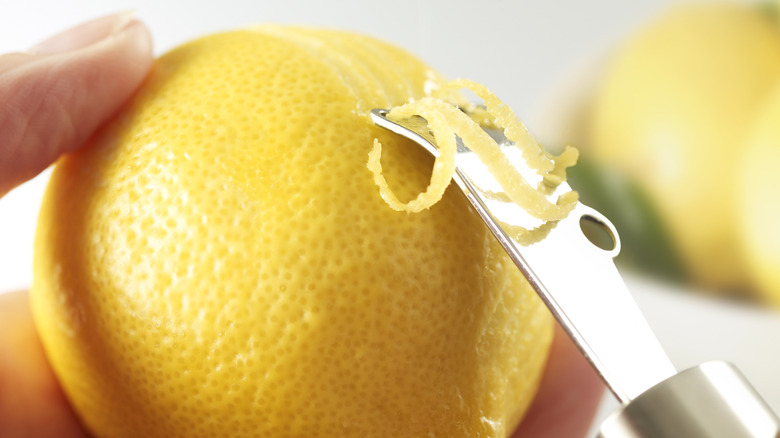14 Mistakes You're Making Pairing Pasta With Lighter Sauces
Pairing pasta with lighter sauces may seem simple, but creating a truly memorable dish requires finesse. As a professionally trained chef and food writer, I have spent a solid chunk of time and change exploring the nuances of pasta and sauce pairings, both in restaurant kitchens and in my home. My time cooking in New Orleans, Brooklyn, and Manhattan taught me that the smallest details — like the shape of the pasta or the temperature of the sauce — can mean the difference between a forgettable meal and one that leaves people talking. Over the years, I've experimented with fresh pasta, dried pasta, and sauces of every kind, learning not only what makes restaurant-worthy pasta tick, but also why.
Lighter sauces — think olive oil-based blends, citrusy reductions, or herb-forward emulsions — require a more thoughtful approach than their heartier counterparts. While a rich bolognese or creamy Alfredo can mask certain flaws, a delicate sauce leaves no room for error. Mistakes can lead to a dish that feels heavy, unbalanced, or bland — none of which does justice to the beauty of light pasta sauces. The good news? Most of these pitfalls are easy to avoid with a few tweaks to your technique.
Whether you're making a bright lemon caper sauce, a garlicky aglio e olio, or a simple tomato confit, this guide will help you achieve restaurant-worthy results every time. Here's how to elevate your lighter pasta dishes by avoiding some of the most common mistakes — and what to do instead.
Choosing the wrong pasta shape
When pairing pasta with lighter sauces, the shape you choose sets the tone for the entire dish. Thin, delicate sauces, such as lemon butter or a simple garlic and oil, are best matched with equally delicate pasta shapes. Long, thin strands like angel hair, capellini, or linguine allow lighter sauces to coat evenly without overwhelming the pasta. These shapes also bring an elegance to the dish, enhancing the delicate flavors of the sauce.
On the other hand, heavier shapes like rigatoni or farfalle can overwhelm light sauces, making the dish feel clunky and disjointed. The sauce can struggle to fill ridges or cling to chunky shapes, leaving you with bites that lack cohesion. Think of the pasta and the sauce as dance partners: They should move fluidly together, complementing each other at every step.
To take your pairings to the next level, consider the sauce's consistency. A silky herb oil pairs beautifully with spaghetti or tagliatelle, while a sauce with small textural elements like capers or finely minced garlic can shine with slightly wider noodles like pappardelle. The right match creates harmony, ensuring each bite is as satisfying as the last.
Forgetting to reserve pasta water
The humble pot of pasta water might not look like much, but it's one of the most powerful tools in your kitchen. As pasta cooks, the water absorbs starch from the noodles, transforming into a silky liquid that can emulsify and bind your sauce. When working with lighter sauces, this starchy water is an absolute game-changer.
Without pasta water, light sauces often fail to cling properly to the noodles, leaving you with puddles of liquid at the bottom of the plate. A splash of pasta water, however, turns your sauce into a glossy, cohesive coating that hugs each strand of pasta. It's particularly helpful for oil-based sauces like a simple aglio e olio or cacio e pepe, where achieving the right emulsified texture is essential.
To ensure you're never caught without some pasta water, make a habit of scooping out a cup of the liquid just before draining your noodles. Add it gradually to your sauce as you toss the pasta, allowing the starches to bind the sauce together. The result? A perfectly sauced dish that feels cohesive and balanced, with no excess liquid left behind. Believe it or not, you can even save pasta water to revive your leftovers the next day.
Overloading with ingredients
Lighter sauces are all about showcasing simplicity and balance. They allow a handful of high-quality ingredients to shine, creating dishes that feel fresh and vibrant. However, it's all too easy to overdo it by adding too many elements. While a heavier sauce might hide a jumble of ingredients, a light sauce becomes muddled and chaotic when overloaded.
When crafting a dish with a light sauce, less truly is more. Stick to a few complementary flavors and let them sing. For example, a lemon butter sauce doesn't need more than lemon, butter, and perhaps a sprinkling of fresh herbs to feel complete. Adding too many extras — like garlic, capers, and cheese all at once — risks masking the sauce's core flavor and tipping the balance.
Instead of throwing everything into the mix, focus on restraint and intention. Each ingredient should have a purpose, whether it's adding acidity, texture, or aroma. By keeping the sauce simple, you'll create a dish where every component feels deliberate, and the lightness of the sauce is celebrated rather than overshadowed.
Skipping the acidic component
Acidity is one of the most overlooked elements in lighter pasta sauces, yet it's often the key to elevating a dish from good to great. Without acidity, lighter sauces can taste flat, lacking the brightness and complexity that make them shine. A squeeze of lemon, a splash of white wine, or even a dash of vinegar can work wonders in bringing balance and vibrancy to the dish.
Take a classic aglio e olio, for example. While garlic and oil form the backbone of the sauce, a touch of lemon juice, zest, or even preserved lemon rind cuts through the richness and adds a refreshing note. Similarly, a white wine reduction can enhance a butter sauce, adding depth without weighing it down.
Acidity not only enhances flavor but also helps to tie all the elements of the dish together. It brightens fresh herbs, complements salty cheeses, and balances the richness of oils or butter. When in doubt, taste your sauce before serving and consider whether it could benefit from a hit of acid. You'll be amazed at how a small adjustment can transform the entire dish.
Using too much sauce
When it comes to lighter sauces, less is more. Unlike heartier sauces that can stand up to a generous coating, light sauces are meant to enhance the pasta without overshadowing it. Overloading your dish with sauce not only drowns out the delicate flavors but also ruins the balance and texture.
Instead of pouring a mountain of sauce over your pasta, focus on tossing the two together until the noodles are just coated. This ensures that the sauce clings evenly, creating a harmonious bite every time. If you've reserved pasta water, use it to adjust the consistency of the sauce, ensuring it's silky enough to coat without pooling at the bottom of the bowl.
A properly sauced plate of pasta feels light, elegant, and well-balanced. The sauce should be an accent — not the main event. The appropriate amount should allow the pasta's texture and the other ingredients to take center stage. Mastering this ratio will elevate your pasta dishes from amateur to professional in no time.
Serving at the wrong temperature
Temperature plays a pivotal role in the success of lighter pasta dishes. If you serve them too cold, your sauce will congeal into an unappetizing mess. If you serve them too hot, the sauce may break, separating into oil and liquid. Either scenario results in a dish that feels disjointed and unpolished.
The sweet spot for serving lighter pasta dishes is warm — not piping hot. A warm dish preserves the sauce's integrity, allowing it to cling smoothly to the noodles without breaking. To achieve this, warm your serving bowls in advance, and avoid overheating oil-based or butter-based sauces on the stove.
If you're holding the pasta for a few minutes before serving, give it a gentle toss just before plating to ensure the sauce hasn't settled or separated. These small adjustments make all the difference in maintaining the right temperature and texture of your pasta dishes.
Overlooking fresh herbs
Fresh herbs such as basil, parsley, and even mint are the unsung heroes of lighter pasta sauces. Their bright, aromatic flavors add depth and complexity, tying the entire dish together. Yet, many cooks either omit them entirely or use them incorrectly, resulting in a dish that feels one dimensional.
The key to maximizing the impact of fresh herbs is timing. Add them at the very end of your cooking to preserve their vibrant flavor and color. For example, a chiffonade of basil sprinkled over a simple tomato sauce elevates the dish with a burst of freshness. Similarly, a handful of chopped parsley stirred into aglio e olio just before serving adds brightness and balance.
Don't be afraid to experiment with less common herbs, such as tarragon, chervil, or marjoram, which can lend unique and unexpected flavor notes to your dishes. By using fresh herbs thoughtfully, you'll transform even the simplest sauce into something extraordinary.
Neglecting the pasta-to-sauce ratio
Achieving the perfect pasta-to-sauce ratio is an art. Too much pasta leaves the dish dry and underwhelming, while too much sauce can feel overwhelming and heavy. Finding the right balance ensures that every bite delivers the ideal combination of flavor and texture.
A general rule of thumb is to aim for a 1:1 ratio by volume. This doesn't mean measuring out cups of pasta and sauce, but rather developing an intuitive sense of balance. Start with less sauce than you think you need, then gradually add more as you toss the pasta. This method allows you to control the consistency and ensure an even coating.
If you find yourself with too much pasta and not enough sauce, reserved pasta water can save the day. Adding a splash or two can stretch the sauce without diluting its flavor, ensuring the dish remains cohesive. Remember, pasta and sauce should complement each other, with neither one dominating the other.
Adding dairy to oil-based sauces too soon
Cheese and cream can be beautiful additions to lighter pasta sauces, but timing is everything. Add dairy too early, and you risk clumping, curdling, or a gritty texture that detracts from the dish's elegance. This is especially true for oil-based sauces like aglio e olio or simple herb and garlic blends.
To incorporate dairy seamlessly, wait until the sauce is off the heat before adding your dairy. The residual heat from the pasta and the sauce will gently melt the cheese or emulsify the cream, creating a smooth, cohesive finish. For example, a sprinkle of parmesan stirred in at the end adds richness without overpowering the dish. Similarly, a splash of cream introduced off the heat creates a luxurious texture without breaking the sauce.
Patience is key. Rushing the process can lead to disappointing results, so take your time, and let the ingredients work their magic naturally.
Not toasting garlic properly
Garlic is a cornerstone of many lighter pasta sauces, but its preparation can make or break the dish. Burnt garlic brings bitterness and an acrid aftertaste that can ruin even the most carefully crafted sauce. Conversely, undercooked garlic lacks the depth and aroma that make this ingredient so irresistible.
The secret to perfect garlic lies in gentle toasting. Start with thinly sliced or minced garlic in cold oil, then heat them slowly over low to medium heat. This allows the garlic to infuse the oil with its flavor while developing a golden, aromatic quality. The moment the garlic turns fragrant and lightly golden, remove it from the heat to prevent overcooking.
Properly toasted garlic provides a rich, nutty base that enhances lighter sauces without overpowering them. It's a simple step, but one that elevates your dish to a whole new level of flavor. Plus, it's easier than you might think to roast your garlic in the oven ahead of time.
Using dry pasta exclusively
Dry pasta is a pantry staple for good reason — it's convenient, it's affordable, and it works beautifully in many dishes. However, when it comes to lighter sauces, fresh pasta often outshines its dried counterpart. The tender texture and delicate flavor of fresh pasta provide the perfect canvas for many subtle, nuanced sauces.
Fresh pasta, whether homemade or purchased from the store, pairs especially well with sauces such as lemon butter, light cream reductions, or simple olive oil and herb blends. The softer texture of fresh pasta allows the sauce to cling effortlessly, creating a cohesive and luxurious bite.
That's not to say you should abandon dry pasta entirely. Certain shapes, like spaghetti or linguine, still perform beautifully with lighter sauces. But if you're looking to take your dish to the next level, consider swapping dry pasta out for some fresh — it's a small change but one that delivers big results.
Ignoring the power of citrus zest
Citrus zest is one of the easiest ways to add bold, bright flavor to lighter sauces without introducing any extra liquid. While the juice provides acidity, zest contributes concentrated citrus oil that enhances the dish's aroma and depth.
For sauces like lemon butter or olive oil and garlic, zesting a lemon directly over the pasta just before serving can make all the difference. The natural oils release as you zest, infusing the dish with a fresh, vibrant note that cuts through richness and balances all the flavors. To better understand how much zest you're getting, it pays to zest your citrus upside down. Just flip your tool over so that the zest is captured on top of the zester rather than falling onto your food. Then just sprinkle on the desired amount.
Don't limit yourself to lemons, either. Orange, lime, or even grapefruit zest can bring unexpected twists to your pasta dishes. Just remember to use a light hand, as too much zest can overpower the other elements of the sauce.
Underseasoning pasta water
Properly salted pasta water is the foundation of a great pasta dish. Without salt, your noodles will taste bland, no matter how flavorful your sauce is. Think of pasta water as an opportunity to season the pasta from the inside out, ensuring every bite is infused with flavor. Your pasta water needs way more salt than you probably thought it did.
When salting pasta water, aim for a level that tastes like the sea. This may seem excessive, but much of the salt will stay in the water, leaving just enough to enhance the flavor of the pasta. Add salt once the water reaches a boil, then taste it to ensure it's seasoned properly before adding the pasta.
Skipping this step is a missed opportunity to build flavor from the ground up. By salting your pasta water generously, you set the stage for a dish that's perfectly seasoned from start to finish.
Not tossing your pasta enough
One of the most overlooked techniques in pasta-making is the art of tossing. Simply spooning sauce over cooked pasta won't cut it — light sauces require a thorough tossing in your pasta to achieve that creamy, aerated, emulsified quality that's the hallmark of a great dish.
Tossing helps distribute the sauce evenly, ensuring every strand or piece of pasta is coated. It also helps emulsify the sauce with the pasta's starch, creating a luxurious texture that clings beautifully to the noodles. Use a combination of tongs and gentle flipping motions in the pan to achieve the best results.
If you're feeling ambitious, try tossing the pasta entirely in the air as you would see chefs do in a professional kitchen. While it definitely takes some practice, it's worth the effort. The technique aerates the sauce, giving it a silky, light consistency that's hard to replicate otherwise.














